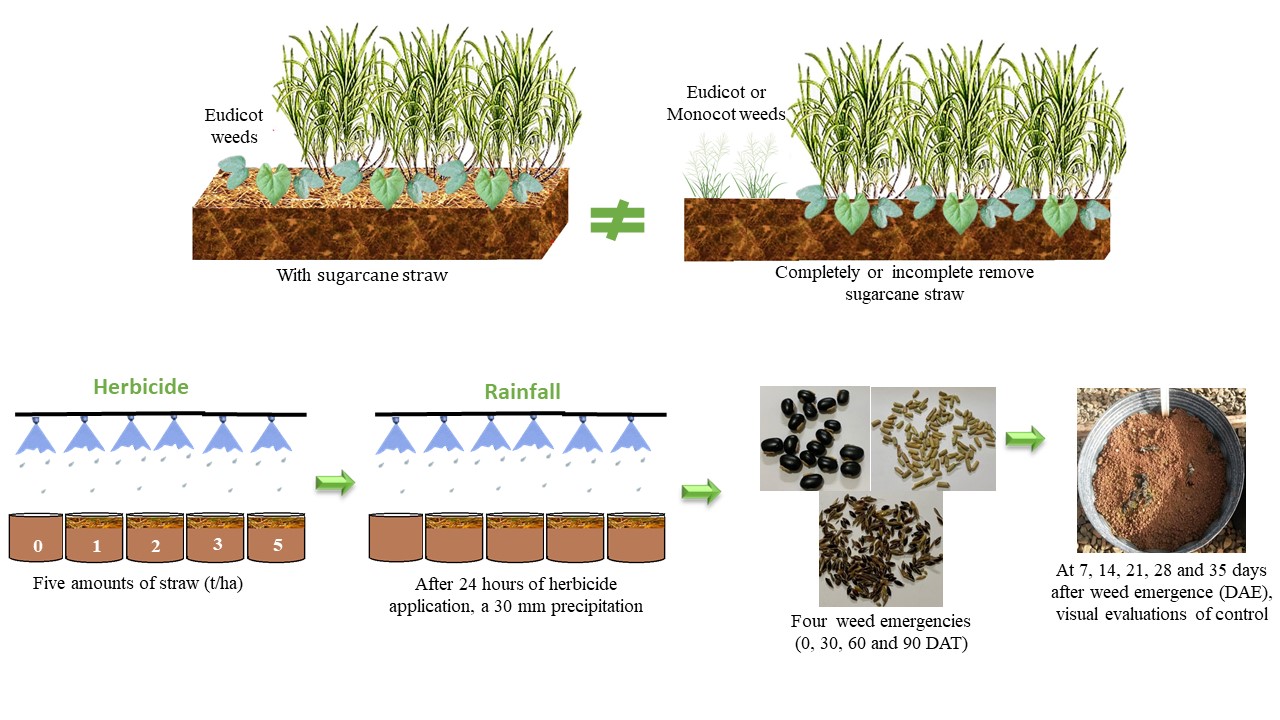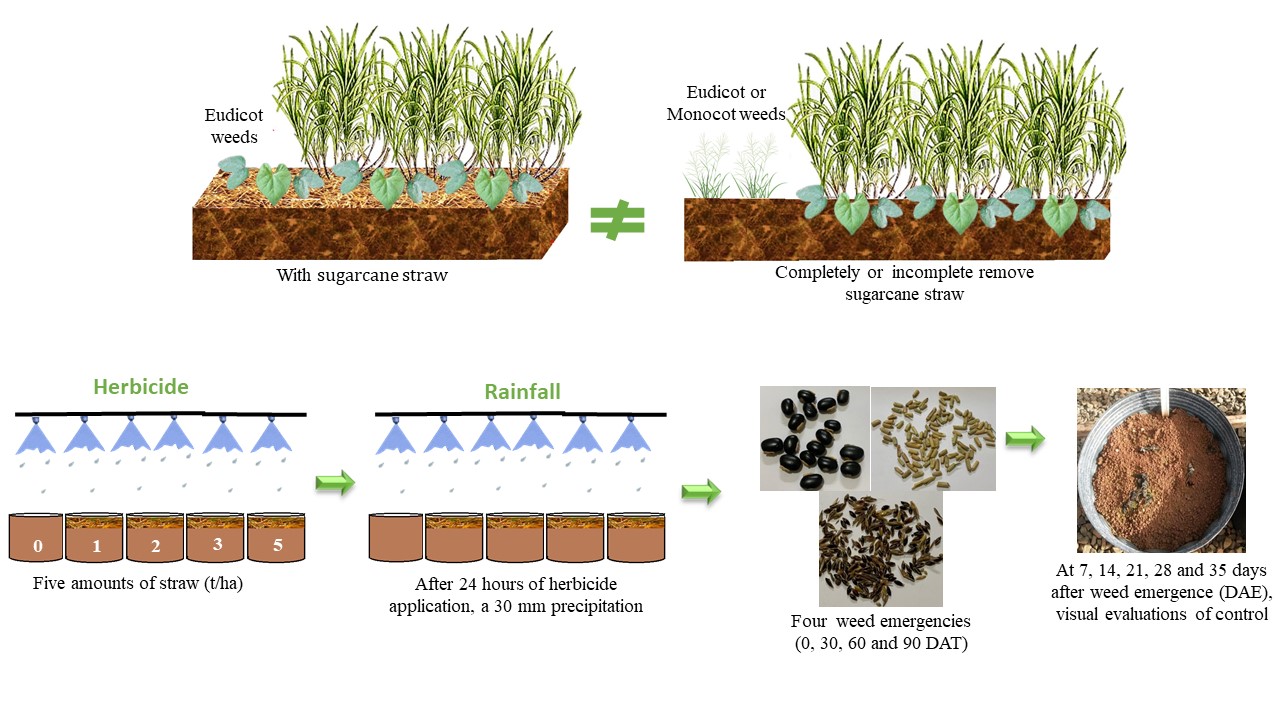Influence of sugarcane straw on weed germination control
Weed control in sugarcane
DOI:
https://doi.org/10.48162/rev.39.021Palabras clave:
Lixiviación, Germinación-asíncrona,, residual, estación húmedaResumen
This research studied the effectiveness of herbicide treatments in weed control and during different periods of emergence, when applied to varying amounts of straw. The experiment was conducted in a greenhouse with pre-emergent herbicides: amicarbazone, metribuzin, indaziflam, isoxaflutole, amicarbazone + indaziflam, metribuzin + indaziflam, and isoxaflutole + indaziflam, against three species (Sorghum halepense, Rottboellia exaltata, and Mucuna aterrima). The experimental design was completely randomized in a 5x4 factorial scheme, with five amounts of straw (0, 1, 2, 3, and 5 t/ha) and four periods of weed emergence (0, 30, 60, and 90 days after treatments). The residual control of indaziflam was influenced by the amount of straw. Metribuzin presented a low residual control, while isoxaflutole was not affected by the amount of straw. Amicarbazone offered residual control for Mucuna aterrima. The association between indaziflam + isoxaflutole displayed a suitable residual control against Sorghum halepense and Rottboellia exaltata. The association of indaziflam + metribuzin adequately controlled Mucuna aterrima and Sorghum halepense. herbicide physical-chemical characteristics can influence their performance, and the association of products may increase residual and weed spectrum control.
Highlights
- This partial or total removal of remaining sugarcane straw from the soil surface alters weeds dynamics in sugarcane fields. In this situation we have monocot and dicot weeds infesting the sugarcane crops.
- Among these species, some plants are even more difficult to control, such as Sorghum halepense, Rottboellia exaltata, and Mucuna aterrima
- Indaziflam herbicide presented a better performance in controlling monocotyledonous plants than eudicot plants.
- The herbicides amicarbazone and metribuzin presented adequate control of Mucuna aterrima despite having lower residual control.
- The association of indaziflam + metribuzin, resulted in satisfactory results for Mucuna aterrima, Sorghum halepense, and Rottboellia exaltata.
Descargas

Descargas
Publicado
Cómo citar
Número
Sección
Licencia
Derechos de autor 2018 Revista de la Facultad de Ciencias Agrarias UNCuyo

Esta obra está bajo una licencia internacional Creative Commons Reconocimiento-NoComercial-CompartirIgual 3.0.
Aquellos autores/as que tengan publicaciones con esta revista, aceptan las Políticas Editoriales.











.jpg)




